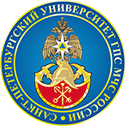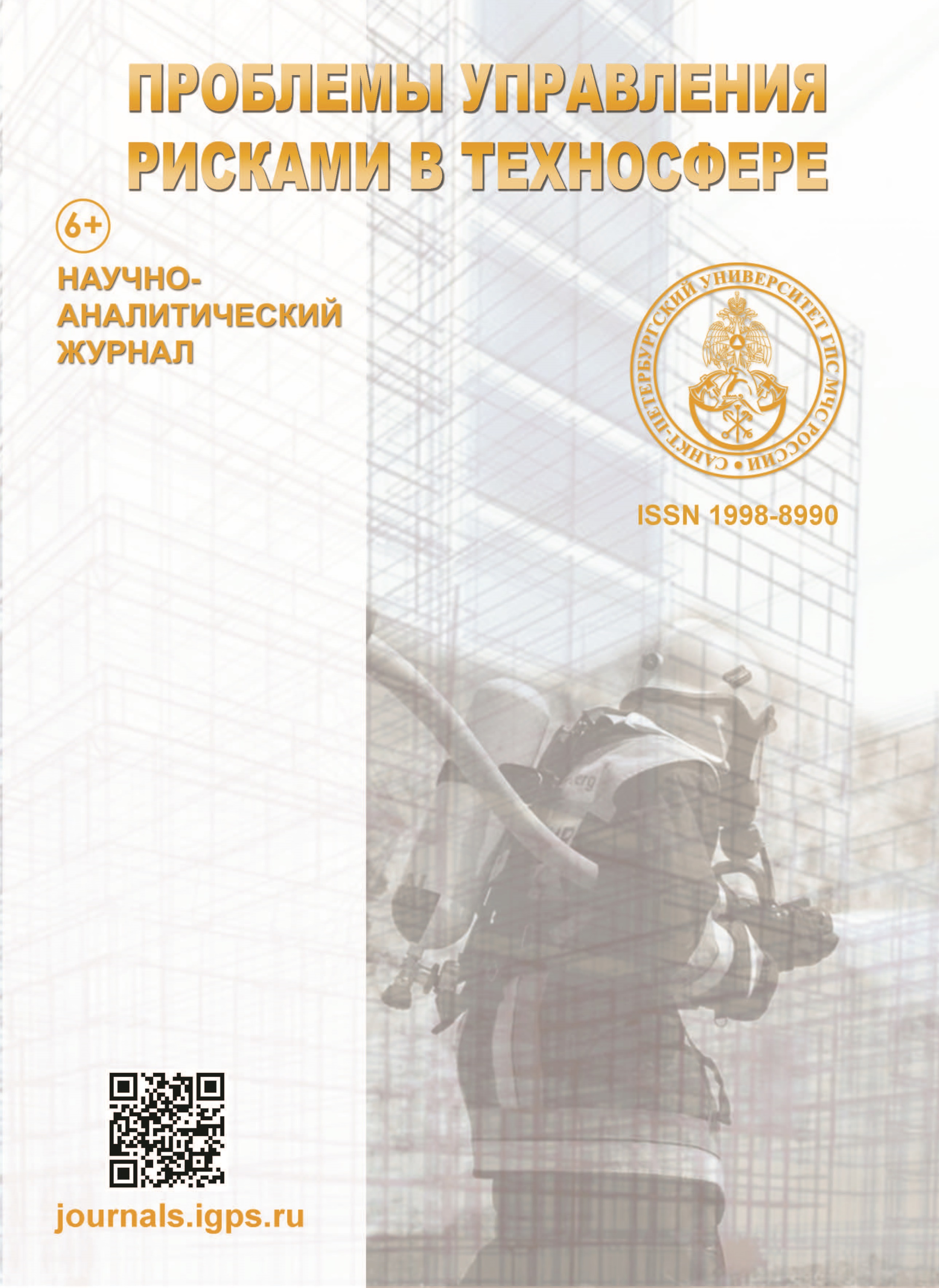Russian Federation
Russian Federation
Russian Federation
One of the promising areas of joint research by the Saint-Petersburg university of State fire service of EMERCOM of Russia, JSC «Oceanos» and Saint-Petersburg state marine technical university today is the development of technologies for the use of groups of marine robotic systems in the field of monitoring and patrolling underwater potentially dangerous objects. The development of this direction may be useful for performing tasks of associated patrolling and analysis of the state of the underwater potentially dangerous objects, as well as for identifying, classifying and compiling predictive models for the spread of pollution present in the water area.
marine robotics, underwater potential hazardous objects, underwater vehicles, underwater glider, wave glider, control systems, planning systems
1. Robotic systems and applications / A. Kakogawa [et al.] // InTech. 2020.
2. 3D registration and integrated segmentation framework for heterogeneous unmanned robotic systems / H. Balta [et al.] // Remote Sensing. 2020. Vol. 12. Iss. 10. P. 1608.
3. Baudoin Y., De Cubber G., Cepolina E. Mobile robots supporting risky interventions, humanitarian actions and demining, in particular the promising DISARMADILLO Tool // Robotics for risky interventions and environmental surveillance: in proceedings of TC17-VRISE2021 - A VIRTUAL topical event of technical committee on measurement and control of robotics (TC17), International measurement confederation (IMEKO). Houston, TX, USA, 2021. P. 5-6.
4. Demonstrating interoperability between unmanned ground systems and command and control systems / K. Mathiassen [et al.] // International journal of intelligent defence support systems. 2021. Vol. 6. Iss. 2. P. 100-129.
5. Operational validation of search and rescue robots / G. De Cubber [et al.] // Search and rescue robotics - from theory to practice. InTech. 2017.
6. Interoperability in a heterogeneous team of search and rescue robots / D.S. López [et al.] // Search and rescue robotics - from theory to practice. InTech. 2017.
7. A proof of concept of the in-flight launch of unmanned aerial vehicles in a search and rescue scenario / N. Nauwynck [et al.] // ACTA IMEKO. 2019. Vol. 8. Iss. 4. P. 13-19.
8. Ferreira B., Matos A., Alves J. Water jet propelled autonomous surface vehicle UCAP: System description and control // Proceedings of MTS/IEEE Oceans 2016 Shanghai conference. Shanghai, China: IEEE, 2016.
9. Field experiments for marine casualty detection with autonomous surface vehicles / A. Martins [et al.] // Proceedings of MTS/IEEE Oceans 2013 San Diego conference. San Diego, USA: IEEE, 2013.
10. A detection method of the rescue targets in the marine casualty based on improved YOLOv5s / Bai Jing [et al.] // Frontiers in neurorobotics. 2022. Vol. 16. DOIhttps://doi.org/10.3389/fnbot.2022.1053124.
11. What is the goal of Avalon? // SeaDronesSee. URL: https://seadronessee.cs.uni-tuebingen.de/avalon 2023 (data obrashcheniya: 13.01.2023).
12. Zolich A. Thesis highlights how unmanned vehicles can be utilised to boost selected maritime natural sciences research scenarios in remote locations, such as the Arctic. Trondheim: Norwegian university of science and technology, 2019.
13. Yusuke Yokota, Takumi Matsuda. Underwater communication using UAVs to realize high-speed AUV deployment // Remote Sens. 2021. № 13 (20). 4173. DOIhttps://doi.org/10.3390/rs13204173.
14. Vyalyshev A.N. MCHS Rossii i podvodnye potencial'no opasnye ob"ekty // Tekhnologii grazhdanskoj bezopasnosti. 2017. № 1 (51). T. 14. C. 4-10.
15. Razrabotka avtonomnyh neobitaemyh podvodnyh glajderov / I.V. Kozhemyakin [i dr.] // Izvestiya Yuzhnogo federal'nogo universiteta. Tekhnicheskie nauki. 2013. № 3 (140). S. 31-39.
16. Gajkovich B.A., Zanin V.Yu. Voprosy sozdaniya semejstva morskih glajderov kak elementov global'noj sistemy morskoj bezopasnosti // Perspektivnye sistemy i zadachi upravleniya: materialy IX nauch.-prakt. konf. 2014. S. 211-218.
17. Volnovoj glajder kak element morskoj global'noj informacionno-izmeritel'noj sistemy / I.V. Kozhemyakin [i dr.] // Izvestiya YUFU. Tekhnicheskie nauki. 2015. S. 59-71.
18. Gajkovich B.A., Zanin V.Yu., Kozhemyakin I.V. Aspekty prakticheskogo primeneniya podvodnyh glajderov na baze opytnoj ekspluatacii // Novyj oboronnyj zakaz. 2016. № 4 (41). S. 78-81.
19. Primenenie podvodnyh glajderov dlya geologo-razvedki // RoboTrends.
20. Problemy radiacionnoj reabilitacii arkticheskih morej, sposoby i puti ih resheniya / A.A. Sarkisov [i dr.] // Arktika. Ekologiya i ekonomika. 2011. № 1. S. 70-81.
21. Howatt T., Ross T., Waterman S. University of British Columbia; Institute of ocean sciences ocean gliders to study baleen whale habitat in roseway basin.
22. Fuchs H.L., Gerbi G.P. Seascape-level variation in turbulence- and wave-generated hydrodynamic signals experienced by plankton // Prog. Oceanogr. 2016. № 141. P. 109-129.
23. Using autonomous underwater gliders for geochemical exploration surveys / M. Russell-Cargill Louise [et al.] // The APPEA Journal. 2018. № 58. P. 367-380.
24. Thomas J. Ryan-Keogh, Walker O. Smith. Temporal patterns of iron limitation in the Ross Sea as determined from chlorophyll fluorescence // Journal of marine systems. 2021. № 215: 103500.
25. FIRe glider: Mapping in situ chlorophyll variable fluorescence with autonomous underwater gliders / F. Carvalho [et al.] // Limnol oceanogr methods. 2020. № 18. P. 531-545.
26. Elektronnyj katalog oborudovaniya OOO «SITIKRIM» na veb-resurse. URL: http://seatechrim.ru/levre_menyu/oborudovanie1/analiz_morskoj_vody/datchiki/ (data obrashcheniya: 14.10.2022).
27. Maevskiy A., Gorelyi A., Morozov R. Development of a hybrid method for planning the movement of a group of marine robotic complexes in a priori unknown environment with obstacles // 22nd International conference of young professionals in electron devices and materials. 2021.
28. Intellektual'noe planirovanie traektorij podvizhnyh ob"ektov v sredah s prepyatstviyami / V.H. Pshihopov [i dr.] // FIZMATLIT. 2014. № 595.
29. Maevskij A.M., Gajkovich B.A. Razrabotka gibridnyh avtonomnyh neobitaemyh apparatov dlya issledovaniya mestorozhdenij uglevodorodov // Vesti gazovoj nauki. 2019. № 2 (39). S. 29-40.
30. Razrabotka i issledovanie pozicionno-traektornogo regulyatora dlya upravleniya dvizheniem podvodnogo glajdera / B.V. Gurenko [i dr.] // Inzhenernyj vestnik Dona. 2019. № 6 (57). P. 20.
31. Maevskij A.M., Pechajko I.A., Tursenev S.A. Primenenie morskih robototekhnicheskih kompleksov dlya monitoringa i analiza potencial'no opasnyh podvodnyh ob"ektov // Problemy upravleniya riskami v tekhnosfere. 2021. № 2 (62). S. 32-39.
32. Maevskij A.M., Zanin V.Yu., Tursenev S.A. Primenenie grupp avtonomnyh neobitaemyh podvodnyh apparatov planernogo tipa v kachestve sistem monitoringa podvodnyh potencial'no-opasnyh ob"ektov na primere monitoringa ekologicheskogo sostoyaniya akvatorii pri likvidacii posledstvij chrezvychajnyh situacij, svyazannyh s avarijnymi razlivami nefti i nefteproduktov // Nauch.-analit. zhurn. «Vestnik S.-Peterb. un-ta GPS MCHS Rossii». 2021. № 2. S. 25-32.
33. Zanin V.Yu., Kozhemyakin I.V., Maevskij A.M. Ispol'zovanie morskoj robototekhniki v zadachah operativnoj okeanografii: otechestvennyj i zarubezhnyj opyt // Morskie informacionno-upravlyayushchie sistemy. 2020. № 1 (17). S. 94-102.
34. Razrabotka elementov podvodnyh robototekhnicheskih rezidentnyh sistem na primere otechestvennogo avtonomnogo neobitaemogo podvodnogo apparata intervencionnogo klassa i soputstvuyushchih tekhnologij / V.Yu. Zanin [i dr.] // Mezhdunar. konkursa nauchnyh, nauchno-tekhnicheskih i innovacionnyh razrabotok, napravlennyh na razvitie i osvoenie Arktiki i kontinental'nogo shel'fa: sb. rabot laureatov 2019 g. 2019. S. 14-22.
35. Kozhemyakin I.V. Innovacionnye tekhnologii morskoj robototekhniki // Sankt-Peterburgskij vestnik vysshej shkoly. 2020. № 10 (165).





